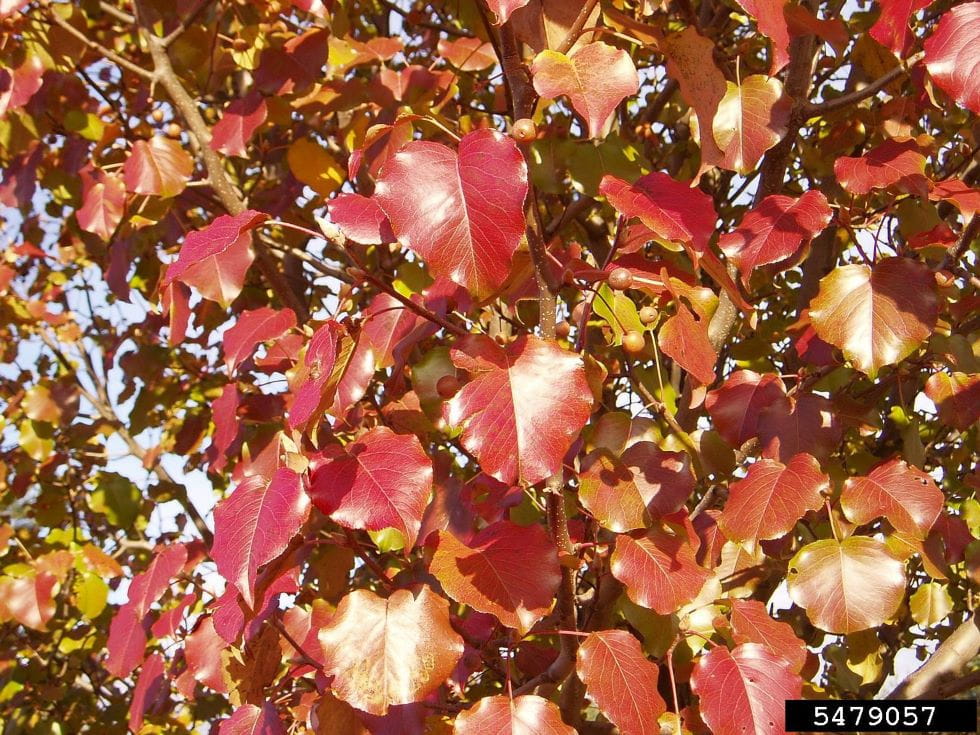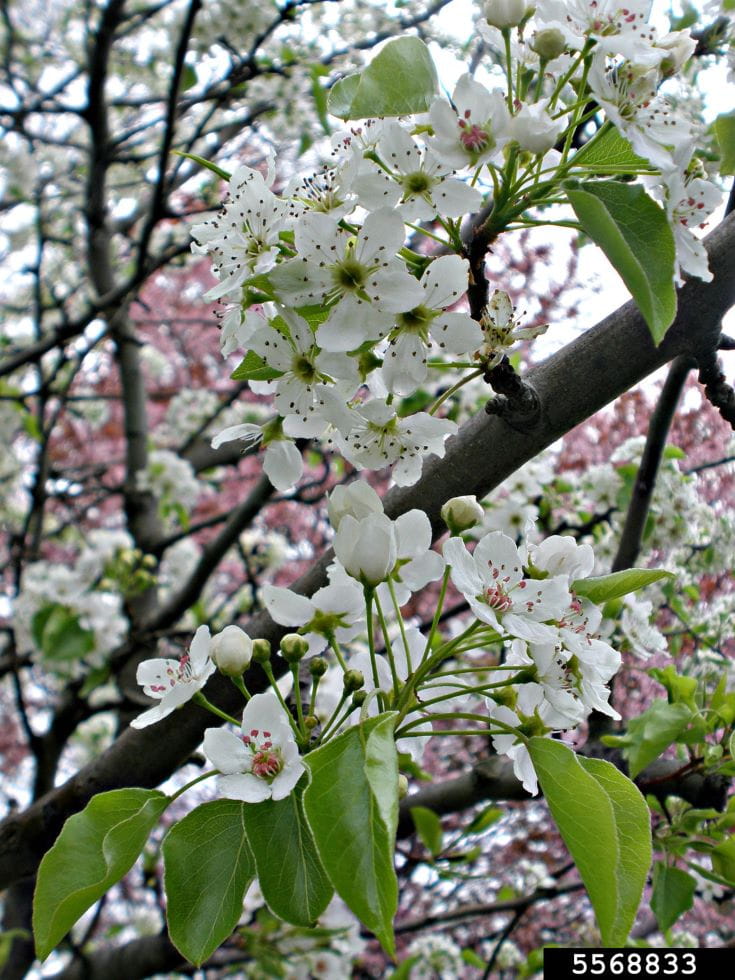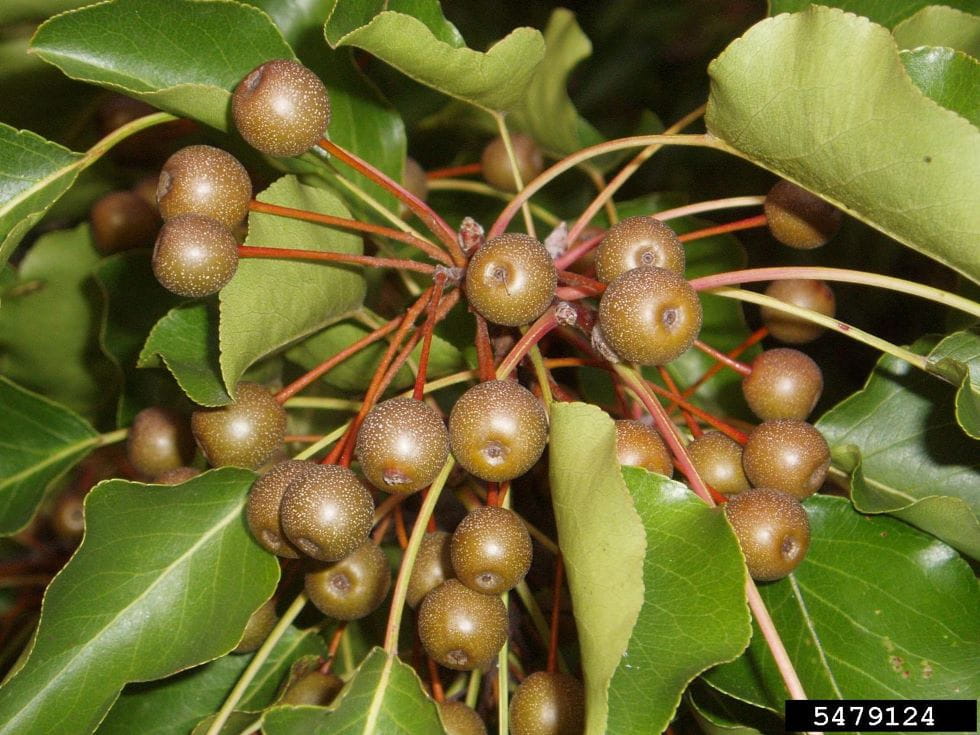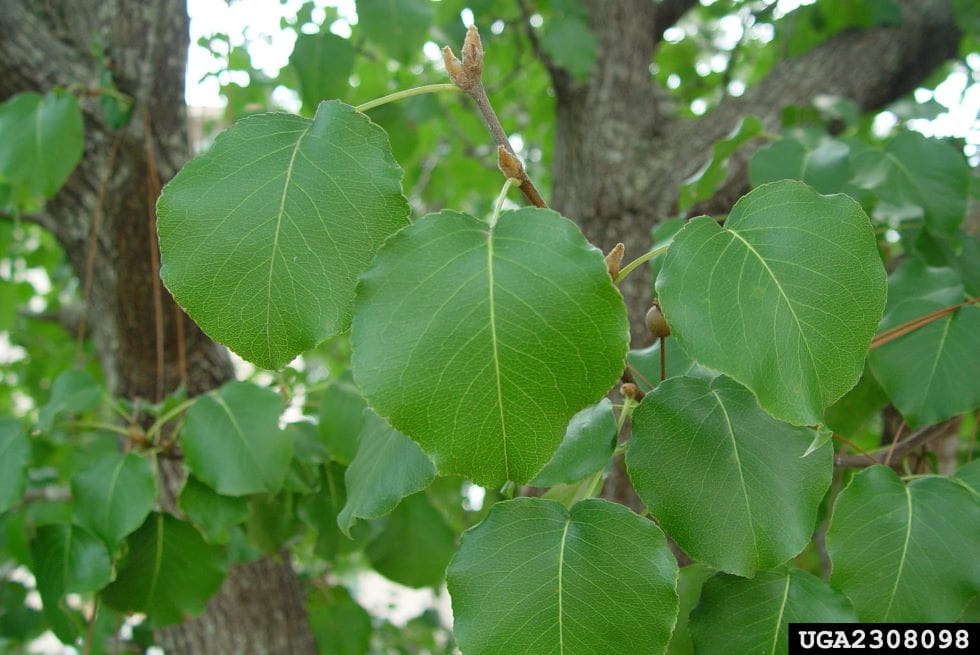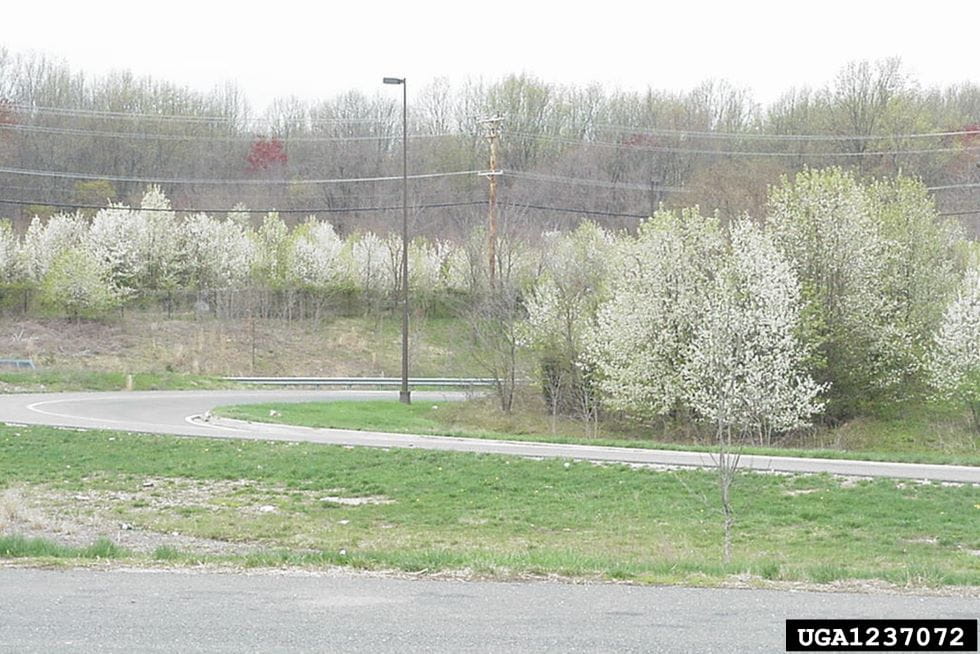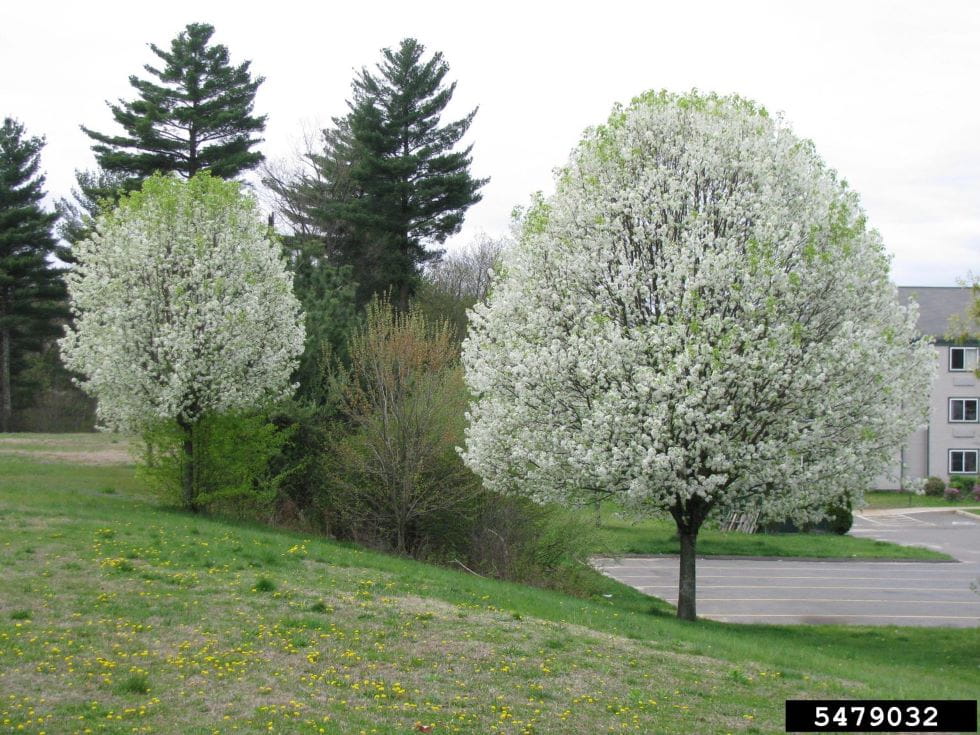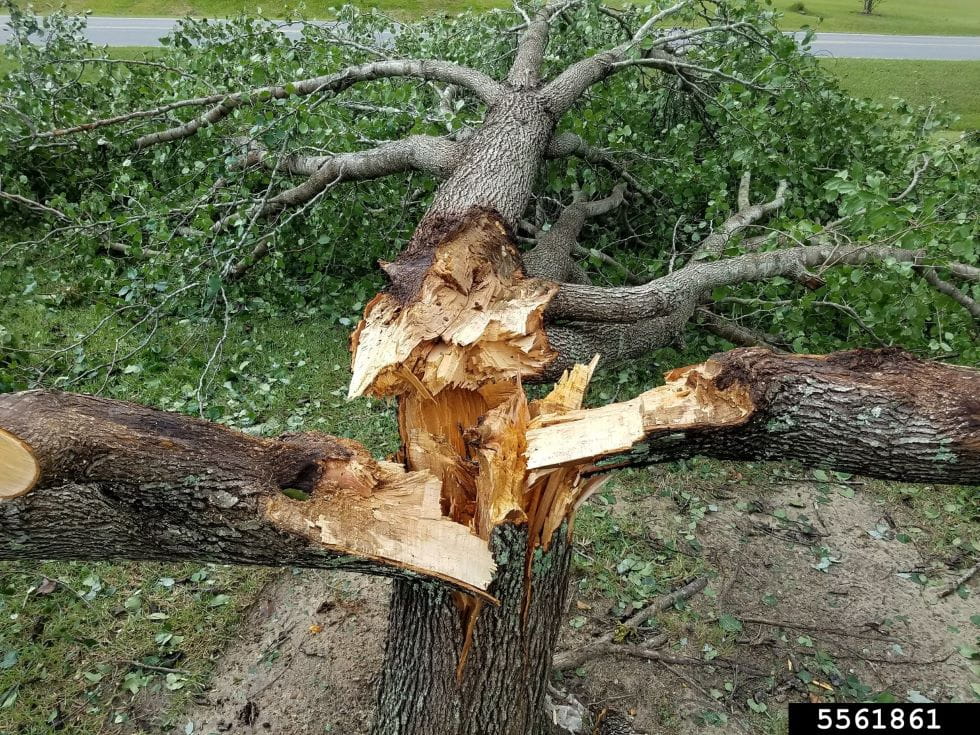The web Browser you are currently using is unsupported, and some features of this site may not work as intended. Please update to a modern browser such as Chrome, Firefox or Edge to experience all features Michigan.gov has to offer.
Invasive Species: Callery Pear
Invasive Species: Callery Pear
This species has been detected in Michigan.
What is callery pear
(Pyrus calleryana)
Other common names: Bradford pear, Cleveland pear; many other cultivar names.
Callery pear is a tree that is often planted in urban settings; it can spread by seeds and root suckers to form thickets, particularly in grasslands, restored wetlands and forest edges, crowding out important native vegetation. This reduces forage for herbivores and insects, altering the food web. Callery pear is also problematic in cities and neighborhoods. Its weak branches can break, and its fruits can make walking difficult.
Identify
What to look for
- Medium-sized, fast-growing tree with smooth young bark and scaly bark when older.
- Small white flowers with five petals emerge before leaves in spring; many varieties have an unpleasant odor.
- Leaves are teardrop- to heart-shaped, shiny, dark green and leathery with a wavy edge; some trees have bright red fall foliage.
- Fruits are small (½ inch diameter), hard, and green to brown; when cut, they resemble a tiny apple or pear. Several attach by long stems to the same point on a twig.
- Some twigs develop sharp thorns, particularly near flowering stems.
Callery pear photos
The following images can help identify callery pear. Click on each photo for descriptions.
Report
To report suspected callery pear:
- Use the Midwest Invasive Species Information Network (MISIN) online reporting tool.
- Or - download the MISIN smartphone app and report from your phone.
Note the location of the suspected callery pear and be sure to include at least one photo of the plant to help with verification.
Species information
Habitat
Commonly planted as a street tree, but escapes into woodland edges, wetlands, fields and prairies.Range
Native Range: Callery pear is native to China, Japan and other areas of southeast Asia.
U.S. Distribution: Found escaped from cultivation throughout the eastern U.S., particularly along roadsides and in uncultivated areas near plantings, but also escaping into woodlands, wetlands and open fields.
View the EDDMaps distribution map for callery pear.
Michigan Distribution: First collected outside of cultivation in 1998 in Oakland County, this tree is becoming established along roadsides and in fields throughout the Lower Peninsula.
View the MISIN map of callery pear observations.
Local concern
Callery pear outcompetes native plants and can quickly create thickets of trees that aren’t part of the food web for insects, deer and other wildlife. It can interrupt regrowth of native forest trees. Its weak branching and ball-bearing-like fruit may cause hazards in urban areas.
How it spreads
Originally introduced as an ornamental landscape planting, callery pear can spread by seed and root suckers. Its fruits may be eaten by birds, spreading the seeds to natural areas.
Common look-alikes
- Serviceberries (Amelanchier spp.) – Also sport white, 5-petal blossoms before leaves emerge, but petals are longer than they are wide and flowers are spaced out along stems. Leaves are thinner and not glossy, while fruit is a dark berry. Common on forest edges.
- Common pear (Pyrus communis) – Leaves are also leathery but usually longer than they are wide. Fruits are larger, softer, more oval or “pear shaped” and present in lower quantities. Mostly growing where planted, though they may sucker and form thickets. Some may be grafted onto callery pear rootstock, in which case root suckers would be callery pear clones.
- Hawthorns (Crataegus spp.) – Trees are often covered in long, sharp thorns. Leaves are often sharply toothed, and fruits are smaller, softer and red to purple.
